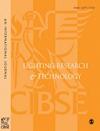互惠法则(或多或少)适用于有效调节昼夜节律的照明
IF 2.2
3区 工程技术
Q2 CONSTRUCTION & BUILDING TECHNOLOGY
引用次数: 0
摘要
在建筑物中提供有效的照明,以支持居住者的昼夜节律,这对照明规范者越来越感兴趣和重要。昼夜节律有效照明不仅仅是提供多少光;这也取决于提供光的时间长短。最近的研究表明,在早晨(即08:00-12:00),光的量和光的持续时间是相互相关的。这打开了许多设计选项,迄今为止未解决的照明规格。本文章由计算机程序翻译,如有差异,请以英文原文为准。
The law of reciprocity holds (more or less) for circadian-effective lighting
Delivering effective lighting in buildings to support circadian entrainment of the occupants is of growing interest and importance to lighting specifiers. Circadian-effective lighting is not simply about how much light to provide; it also depends upon how long that light is provided. Recent research suggests that the amount of light and the duration of light exposure are reciprocally related for entrainment in the morning hours (i.e. 08:00–12:00). This opens up a number of design options heretofore unaddressed by lighting specifiers.
求助全文
通过发布文献求助,成功后即可免费获取论文全文。
去求助
来源期刊

Lighting Research & Technology
工程技术-光学
CiteScore
5.40
自引率
16.00%
发文量
69
审稿时长
>12 weeks
期刊介绍:
Lighting Research & Technology (LR&T) publishes original peer-reviewed research on all aspects of light and lighting and is published in association with The Society of Light and Lighting. LR&T covers the human response to light, the science of light generation, light control and measurement plus lighting design for both interior and exterior environments, as well as daylighting, energy efficiency and sustainability
 求助内容:
求助内容: 应助结果提醒方式:
应助结果提醒方式:


